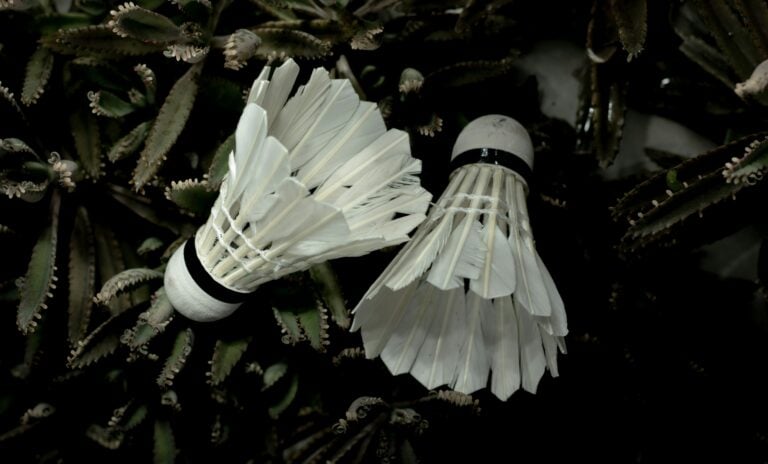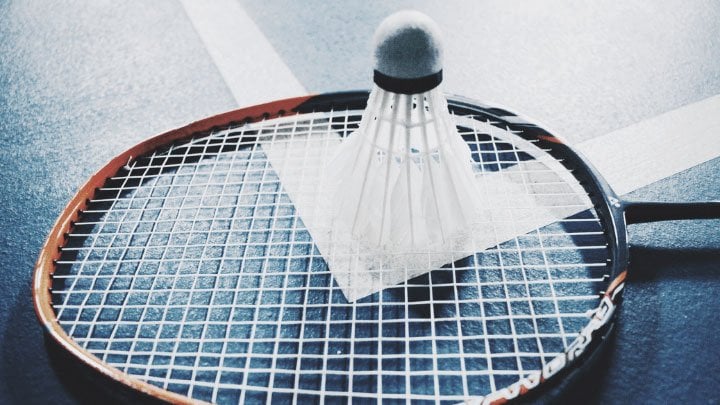
Balance of a badminton racket refers to the point where the maximum weight lies in the racket, beginning from the base of the handle. In layman’s terms, the balance point is where you can balance the racket on your finger.
This article will look into the most frequently asked questions about the balance point of a badminton racket.
Let’s jump into it.
Badminton Racket Balance
As stated above, the balance of a badminton racket refers to the point in the shaft where the maximum mass/weight is concentrated.
Badminton rackets have one of three different balances: head-light, head-heavy, and even-balanced. Let’s discuss them all.
Head-Light Badminton Rackets
Head-light badminton rackets have maximum mass/weight concentrated towards the handle of the racket.
These rackets are usually lightweight and provide a comfier in-hand feel, making for an attractive option for beginners.
Head-light badminton rackets have low to medium-level string tension and are designed to offer maximum control to the player.
These rackets are known to offer easy maneuverability, allowing the player to hit shots with better accuracy and more precision than their head-heavy counterparts.
Where is the Balance Point on Head-Light Rackets?
The balance point on head-light rackets is at a distance of less than 288mm from the base of the handle. It is the point where the maximum mass is concentrated.
What is a Head-Light Badminton Racket Good For?
A head-light badminton racket is ideal for fast reactions to rallies, defensive shots that require fast reaction times, and a flat style of play often needed in doubles. They are usually recommended to intermediate players who don’t have as much control over their shots as their veteran counterparts.
Head-Heavy Badminton Rackets
Head-heavy badminton rackets have maximum mass/weight concentrated towards the head of the frame.
These badminton rackets consist of medium-to-high tension strings to help the player impart more power to their shots.
Head-heavy rackets are incredibly popular with players with an aggressive playing style, with the extra mass in their head helping power hitters impart more power to their smashes and clears.
These rackets aren’t everyone’s cup of tea, though, as their added weight can unnerve a player who is still learning the ropes of the game.
Related article:
Where is the Balance Point on Head-Heavy Rackets?
The balance point on head-heavy rackets is in the head of the frame, at a distance of over 300mm from the base of the racket.
What is a Head-Heavy Badminton Racket Good For?
A head-heavy badminton racket is ideal for players with an aggressive playing style, with the extra mass in the frame enabling the player to impart more power to their smashes as well as clears.
Having said that, the extra power won’t come out of thin air. You’d have to be strong enough to generate it yourself. For this reason, it is generally only professional players with years of experience under their belt who prefer head-heavy rackets.
Even-Balanced Badminton Rackets
Even-balanced rackets, as their name implies, strike the perfect balance between their head-heavy and head-light counterparts.
These rackets are designed to offer you the benefits of both, giving you enough control at the front and enough power from the back.
Even-balanced rackets can be quick enough to help you play precise shots and can still pack quite a punch when playing smashes or clears.
Where is the Balance Point on Even-Balanced Rackets?
The balance point on badminton rackets lies at a distance of 280 – 300 mm from the base of the racket.
What is an Even-Balanced Racket Good for?
An even-balanced racket is generally the preferred choice of amateurs and beginners who are still learning the ropes of the game.
If you are unsure about your playing preference or are yet to have one, then an even-balance racket might be the best choice for you.
Badminton Racket Balance FAQs
To find out the balance of your racket, simply balance its shaft on your middle finger. The direction in which the racket will eventually fall will show you whether the head or the base is heavier. However, if the racket stays on your finger, that will mean that it is an even-handed racket.
To check if your badminton racket is heavy, place its shaft on your middle finger. If it tilts toward its head, that will mean your badminton racket is head-heavy.
The balance point of a badminton racket determines the category of players the racket will suit best. For instance, if you have an attacking playing style, a head-heavy racket might be more beneficial for you.
Conversely, if you are great at defensive shots (which require fast reaction times), a head-light racket might take your game to the next level. All-round, versatile players, meanwhile, might want to opt for an even-balanced racket.
To check if your badminton racket is heavy, place its shaft on your middle finger. If it tilts toward its head, that will mean your badminton racket is head-heavy.
Conclusion
Different balance points provide different benefits to different types of players.
If you’re a power-hitter, a head-heavy racket might help take your game to the next level.
If you like playing close to the net, a head-light racket might enable you to frustrate the opponent with those laser-guided shots.
However, if you’ve started playing badminton only recently, an evenly-balanced racket will help you explore your preferred playing style.






